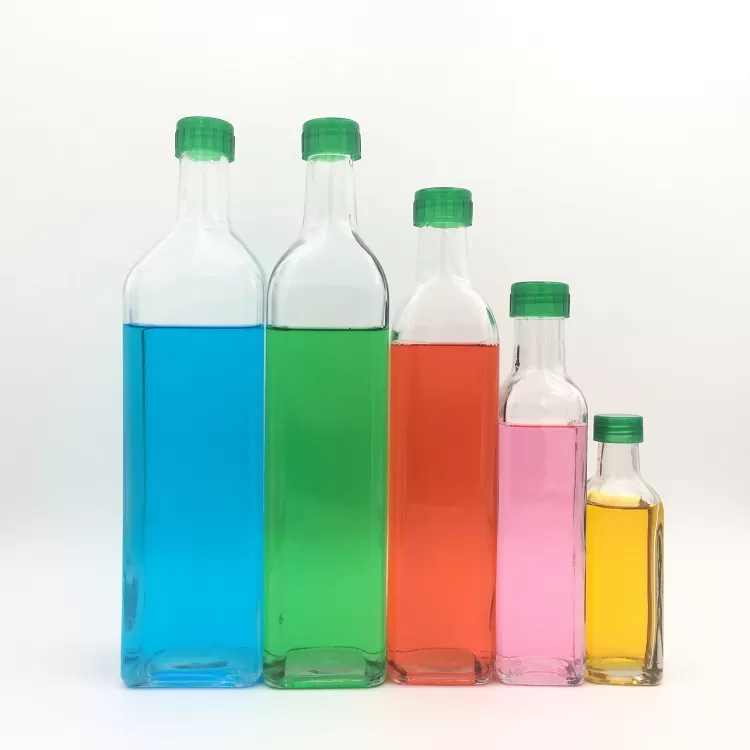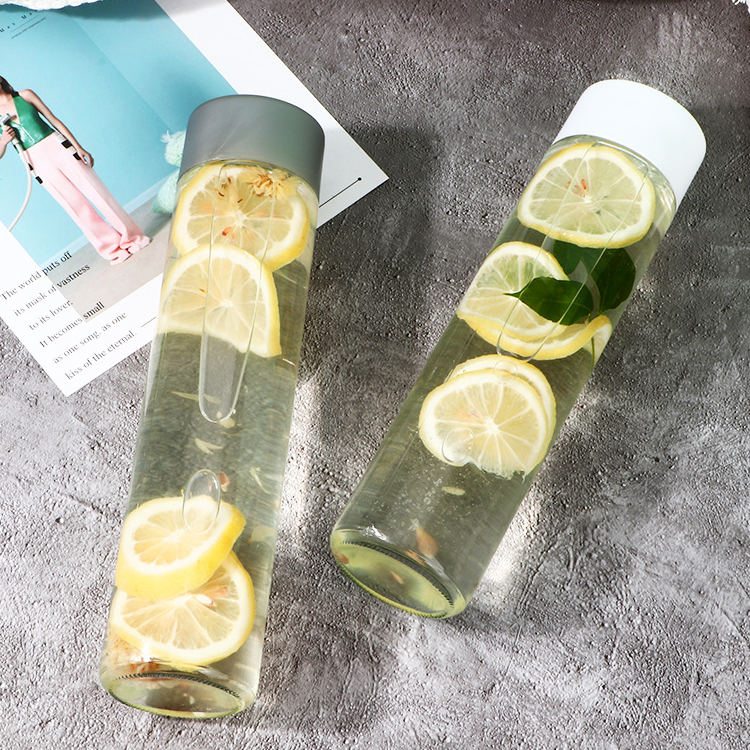Glass vs. Plastic vs. Stainless Steel Water Bottles: Unpacking the Pros and Cons for a Healthier Sip
05-27-2025
Staying hydrated is super important, and the water bottle you choose can make a big difference to your health, your wallet, and our planet. With so many options out there – from sleek glass water bottle designs to sturdy stainless steel water bottle choices and the ever-common plastic water bottle – it's easy to feel a bit lost. This article is here to help! We'll dive deep into the pros and cons of different water bottle materials, looking closely at plastic vs glass water bottles and where stainless steel water containers fit in. Whether you're thinking of ditching plastic to stainless steel or wondering about the cons of glass water bottles, we've got you covered. We'll explore everything you need to know to pick the perfect reusable water bottle for your lifestyle.
Why Does Your Water Bottle Material Even Matter?
When you grab a water bottle to quench your thirst, the material it's made from might be the last thing on your mind. But it really does matter! Think about it: the container touches the water you drink, and some materials can affect the taste, while others might even leach unwanted chemicals. This is a significant concern, especially when we consider how often we use a reusable water bottle.
As Allen, from Glint Glass Bottle, a factory specializing in high-quality glass containers, I've spent years understanding materials. While our focus is on custom glass bottles and jars, the principles of material safety and purity are universal. The plastic industry, for instance, has faced scrutiny over substances like BPA, leading many to seek alternatives. Even with bottled water, often sold in plastic bottles, there's the environmental impact of plastic waste and the potential for microplastic ingestion. Choosing a water bottle isn't just about convenience; it's about health, taste, and sustainability. The different water bottle materials each come with their own set of advantages and disadvantages, and understanding these can help you make an informed decision that's best for you and the environment.

The Clear Choice? Exploring the Pros and Cons of Glass Water Bottles
Glass water bottles have surged in popularity, and for good reason. Many people perceive them as a premium, healthier option. But like any material, they have their upsides and downsides. A glass water bottle offers a pure taste experience, as glass is inert and won't impart any flavors into your water. This is a big plus for those sensitive to the metallic tang some stainless steel water bottles can have, or the plastic taste from a plastic bottle.
However, the primary disadvantage often cited for a glass bottle is its fragility. We've all heard stories or experienced a glass bottle shattering. This is one of the main cons of glass water bottles. They are also typically heavier than plastic or stainless steel alternatives. When considering a reusable water bottle, these pros and cons need careful weighing. While bottles made of glass are excellent for purity, their practicality in all situations might be limited. The pros and cons of glass are quite distinct, making it a love-it-or-leave-it choice for some.
What are the Advantages of Glass in a Water Bottle?
The advantages of glass for a water bottle are compelling, particularly for health-conscious individuals. Firstly, glass is non-porous and impermeable. This means it doesn't absorb odors, flavors, or colors from its contents, ensuring your water tastes exactly as it should – pure and fresh. Unlike some plastic containers, a glass bottle won't leach chemicals into the water, even when exposed to heat or sunlight. This makes glass an incredibly safe for drinking water material. Many high-quality glass water bottles are made from borosilicate glass, which is more durable and thermal shock resistant than regular soda-lime glass.
Secondly, glass bottles are also aesthetically pleasing and offer a premium feel. They are easy to clean thoroughly, and you can often see if they're truly clean, which is a comfort. From an environmental standpoint, glass is 100% recyclable and can be recycled endlessly without loss in quality or purity. This is a significant advantage over plastic, which often has limited recycling cycles and contributes to plastic waste. So, if taste, health, and a certain elegance are high on your list for a reusable water bottle, the advantages of glass are hard to ignore. We, at Glint Glass Bottle, see this preference for purity daily with our clients who choose glass for products like 150ml 5oz Jam Glass Storage Food Jar, demanding the best for their contents.
Are There Any Disadvantages to Using a Glass Bottle for Water?
While the benefits are clear, it's important to acknowledge the disadvantage side of using glass water bottles. The most significant drawback is that glass is a fragile material. A glass water bottle can break if dropped, which can be dangerous and messy. While many glass water bottles offer silicone sleeves for better grip and some impact protection, they're not shatterproof. This makes them less ideal for vigorous activities, for children, or for carrying in a packed bag where they might get knocked around.
Another one of the cons of glass water bottles is their weight. Glass is inherently heavier than plastic and often heavier than metal or plastic counterparts of the same volume. This can make a glass bottle less convenient for hiking, long commutes, or any situation where minimizing weight is a priority. Furthermore, glass water bottles can sometimes be more expensive than plastic options upfront. While their reusability can offset this over time, the initial investment is higher. So, if you're looking for a lightweight, super-durable water bottle for all-terrain adventures, a glass water bottle might not be the top pick despite its purity.
The Ubiquitous Option: Understanding Plastic Water Bottles
Plastic water bottles are everywhere. From single-use bottled water to reusable plastic bottles, plastic has dominated the market for decades due to its low cost, light weight, and durability compared to glass. These advantages of plastic water bottles have made them incredibly convenient for on-the-go hydration. You can find a plastic bottle in almost any shape, size, and color, often at a very accessible price point.
However, the tide has been turning against plastic in recent years. The growing concern over plastic pollution and its impact on ecosystems is a massive issue. Single-use plastic bottles are a major contributor to this plastic waste problem. Beyond the environmental concerns, there are health considerations too. Some plastic containers, especially older or cheaper ones, can leach chemicals like BPA (bisphenol A) or phthalates into the water, particularly when exposed to heat. While many manufacturers now offer BPA-free plastic water bottle options, the general perception of plastic as a potentially less safe material persists for some consumers.

What Are the Pros and Cons of Plastic Water Bottles?
When we look at the pros and cons of plastic for water bottles, convenience and cost often top the "pros" list. Plastic water bottles are lightweight, making them easy to carry. They are also generally more shatter-resistant than a glass water bottle, which is a practical advantage for active lifestyles or for kids. Reusable plastic bottles are widely available and often the most affordable reusable water bottle option. Many modern plastic bottle options are also designed to be quite durable.
On the "cons" side, the environmental impact of plastic consumption is a major disadvantage. Even recyclable plastic often isn't recycled, and it can take hundreds of years to decompose, contributing to plastic waste in landfills and oceans. Health concerns, as mentioned, about chemicals leaching from the plastic into the water are also significant cons of plastic bottles. Even if a plastic bottle is BPA-free, there can be other chemicals present. Furthermore, plastic bottles tend to absorb odors and flavors over time, and they can be harder to get completely clean compared to glass or stainless steel. The taste of the water can also be affected by the plastic.
Here's a quick comparison:
| Feature | Plastic Water Bottle | Glass Water Bottle |
|---|---|---|
| Purity/Taste | Can affect taste, potential chemical leaching | Excellent, no flavor transfer, inert |
| Durability | Generally durable, shatter-resistant | Fragile, can break if dropped |
| Weight | Lightweight | Heavier |
| Cost | Often inexpensive | Can be more expensive |
| Environment | Major pollution concern, limited recyclability | Infinitely recyclable, but energy-intensive mfg. |
| Cleaning | Can retain odors/stains, harder to deep clean | Easy to clean thoroughly |
The Strong Contender: Stainless Steel Water Bottles Explained
Stainless steel water bottles have become a very popular alternative to both plastic and glass water bottles. This material, typically food-grade stainless steel (like 18/8 or 304 grade), is known for its durability and resistance to rust and corrosion. A stainless steel water bottle is robust and can withstand a fair bit of rough handling, making it a great choice for outdoor activities, sports, or just everyday use.
One of the key benefits of stainless steel water bottles offer is their ability to insulate. Many stainless steel bottles are double-walled and vacuum-insulated, which means they can keep your water cold for up to 24 hours or hot for up to 12 hours. This is a significant advantage over most plastic and single-walled glass bottle options. Like glass, stainless steel is non-reactive and doesn't leach chemicals, so it won't affect the taste of the water or pose the same health concerns associated with some plastic types. This makes stainless steel water a safe and enjoyable way to stay hydrated.
Why Might Stainless Steel Bottles Be Your Best Bet?
For many people, stainless steel bottles hit the sweet spot when choosing a water bottle. They offer a great balance of durability, safety, and performance. Unlike a glass bottle, you don't have to worry as much about a stainless steel water bottle breaking if you accidentally drop it. They are significantly more rugged, making them a reliable companion for years. This durability also contributes to their sustainability; a long-lasting reusable water bottle means less need for replacements and less waste.
Stainless steel water bottles are also generally easy to clean, although some designs with narrow necks can be a bit trickier. They don't retain flavors or odors like plastic bottles tend to, so your water will always taste fresh. While they might be a bit heavier than plastic (though often lighter than a comparable glass water bottle), the benefits, especially insulation, often outweigh this. For those looking to reduce their plastic consumption and find a robust, safe, and versatile reusable water solution, stainless steel bottles provide an excellent option. The transition from plastic to stainless steel is a common one for these very reasons.
Beyond the Big Three: What About Aluminium Water Bottles?
While glass, plastic, and stainless steel are the main players, you might also come across aluminium water bottles. Aluminium is lightweight and often cheaper than stainless steel. However, it's important to know that most aluminium water bottles require a thin plastic lining or an enamel coating on the inside. This is because aluminium itself can react with acidic liquids and impart a metallic taste to the water, and there are concerns about aluminium leaching.
This lining, often made of epoxy resin, can potentially contain BPA or other chemicals, somewhat negating the benefit of choosing a metal bottle over plastic. If the lining gets scratched or damaged, the aluminium can come into contact with your water. While some newer aluminium water bottles might use BPA-free linings, the presence of any lining is something to be aware of. They are generally durable but can dent more easily than stainless steel. When considering different water bottle materials, if you're looking at aluminium, it's crucial to check what kind of lining it has, if any, and to understand the potential pros and cons associated with that.

Making the Switch: Tips for Choosing the Right Reusable Water Bottle
Choosing the right water bottle ultimately depends on your personal priorities and how you plan to use it. Are you primarily concerned about taste purity and health? A glass water bottle might be ideal, especially if you're careful with it. Do you need something rugged and insulated for long days out? A stainless steel water bottle could be your perfect match. Is budget your main constraint, or do you need something extremely lightweight for a specific activity? A high-quality, BPA-free plastic bottle might still have a place.
Here are some factors to consider:
- Material Safety: Prioritize materials that don't leach chemicals. Glass and food-grade stainless steel are excellent choices. If opting for plastic, ensure it's BPA-free and from a reputable source.
- Durability: How accident-prone are you? If you need something that can take a tumble, stainless steel is king, followed by durable plastic. A glass bottle requires more care.
- Weight: If you're carrying your water bottle all day or on long hikes, weight matters. Plastic is the lightest, followed by stainless steel and then glass (which is the heavier than metal or plastic option).
- Insulation: If you want your drink water to stay cold or hot for extended periods, an insulated stainless steel water bottle is the way to go.
- Ease of Cleaning: Wide-mouth bottles made of glass or stainless steel are generally easiest to clean. Some plastic bottles tend to stain or retain odors.
- Taste: Glass offers the purest taste. Stainless steel is generally good, but some people detect a slight metallic taste initially. Plastic can sometimes impart a flavor.
- Environmental Impact: Opting for any reusable bottle is a step up from single-use plastic. Glass and stainless steel are highly recyclable and have long lifespans if cared for. Consider the lifecycle of the plastic bottle if you choose that route.
As a manufacturer of glass containers, like the 220ml High Borosilicate Marijuana Glass Bottles, we at Glint Glass Bottle understand the importance of material integrity. High borosilicate glass, for example, offers superior durability and thermal resistance, making it an excellent choice for a premium glass water bottle. When you're looking at water bottle options, don't hesitate to ask questions about the specific grade of material used, especially if you're someone like Mark Thompson, who values quality and transparency from suppliers. Clear communication about certifications (like FDA compliance for food-grade materials) is crucial.
Think about your daily routine.
- Office worker: A stylish glass water bottle or a sleek stainless steel water bottle might be perfect for your desk.
- Gym-goer/Athlete: A durable, possibly insulated stainless steel water bottle or a lightweight, shatter-resistant plastic water bottle could be best.
- Outdoor Enthusiast: A rugged, insulated stainless steel water bottle is often the top choice.
- Busy Parent: Perhaps a mix – stainless steel bottles for durability for the kids, and maybe a glass water bottle for yourself at home.
Ultimately, the best reusable water bottle is the one you'll actually use consistently. By understanding the pros and cons of glass, plastic, and stainless steel water bottles, you can make a choice that helps you stay hydrated, keeps your water tasting great, and aligns with your health and environmental values. Making the switch from disposable water bottles to a reusable water container is a fantastic step towards a more sustainable lifestyle and reducing plastic consumption.
Key Takeaways:
- Glass Water Bottles: Offer the purest taste and are free from chemicals but are fragile and heavier.
- Plastic Water Bottles: Lightweight, affordable, and often durable, but raise environmental concerns (plastic waste) and potential health issues due to chemical leaching in some types of plastic.
- Stainless Steel Water Bottles: Durable, excellent at insulation, safe (no leaching), and a good sustainable option, though can be more expensive and sometimes heavier than plastic.
- Material Choice Matters: Consider taste, health, durability, weight, insulation needs, and environmental impact when choosing the right water bottle.
- Reusable is Key: Any reusable water bottle is a better choice than single-use plastic bottles for reducing plastic consumption.
- Know Your Needs: Your lifestyle and priorities will guide you to the best water bottle material for you.
- Quality Counts: Regardless of material, opt for high-quality, reputable brands to ensure safety and longevity. For instance, if considering a glass product for any use, like a 100ml Mini Square Glass Spice Jar, look for clarity and good craftsmanship.
By carefully considering these points, you're well on your way to selecting a water bottle that you'll love to use every day. Stay hydrated!








